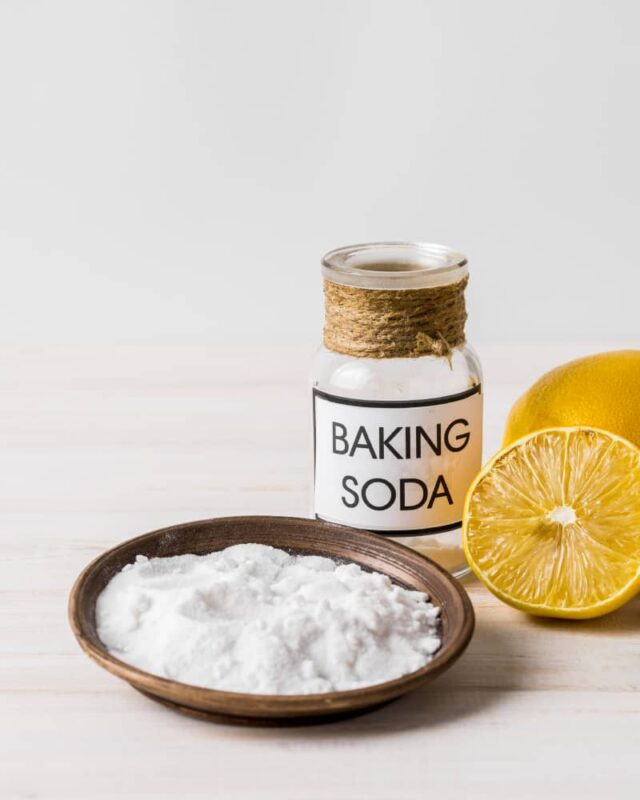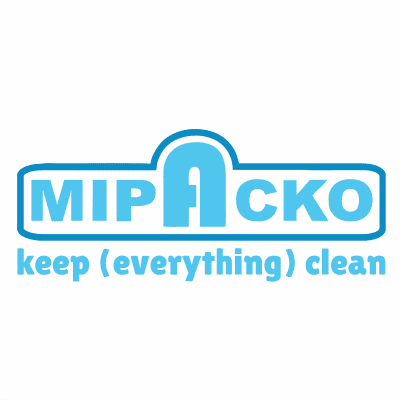Clean a Kitchen Sink – The kitchen sink is an essential part of any home, and it’s no secret that it sees a lot of use on a daily basis. From washing dishes to cleaning vegetables, the kitchen sink is constantly exposed to dirt, grime, and leftover food particles. Over time, this can cause your sink and drain to become clogged and smelly, making it an unpleasant and unhygienic space to work in. However, with the right tools and techniques, clean a kitchen sink and drain can be a breeze. In this article, we’ll show you how to tackle this essential household task and keep your sink looking and smelling fresh for years to come.
How to Clean a Kitchen Sink and Drain
Clean a kitchen sink and drain might seem like a daunting task, but with a few simple steps, you can have a sparkling clean sink and a free-flowing drain. Here’s how:
- Clear out the sink: Before you start cleaning, clear out any dishes or debris from the sink to give yourself ample workspace.
- Scrub the sink: Using a non-abrasive cleaner, such as baking soda or a mild dish soap, scrub the sink thoroughly with a scrub brush or sponge. Pay special attention to the areas around the drain and any stubborn stains.
- Rinse with water: Rinse the sink thoroughly with warm water to remove any remaining cleaning solution.
- Clean the drain: To clean the drain, pour a cup of baking soda down the drain followed by a cup of white vinegar. Let the mixture sit for a few minutes before pouring boiling water down the drain to flush out any remaining debris.
- Deodorize the sink: To deodorize your sink, cut a lemon in half and rub it around the sink, paying special attention to the drain. The citric acid in the lemon will help remove any lingering odors.
- Polish the sink: For an extra shine, you can polish your sink with a few drops of mineral oil or olive oil on a clean microfiber cloth.
By following these simple steps, you can keep your kitchen sink and drain clean and fresh-smelling, making it a more pleasant space to work in. Remember to clean your sink and drain regularly to prevent the build-up of grime and debris.
Read More : How to Clean an Electric Stove: Tips and Tricks for Keeping it Sparkling Clean
How do you clean a greasy kitchen sink drain?
A greasy kitchen sink drain can be a tough problem to tackle, but with a few simple steps, you can effectively clean it. Here’s what you can do:
- Boil water: Boil a large pot of water on your stovetop. This will help to break down the grease and other debris in the drain.
- Pour hot water down the drain: Once the water has boiled, carefully pour it down the drain. This should help to loosen any grease and other debris that may be clogging the drain.
- Use baking soda and vinegar: Mix 1/2 cup of baking soda with 1/2 cup of white vinegar and pour the mixture down the drain. Let it sit for 15-20 minutes to allow the solution to break down the grease.
- Flush with hot water: After the solution has sat for 15-20 minutes, flush the drain with hot water for several minutes to wash away the grease and baking soda solution.
- Repeat if necessary: If the drain is still clogged, repeat the process until the water drains smoothly.
- Use a drain snake: If the above steps don’t work, you can use a drain snake to manually remove any remaining debris from the drain.
You can effectively clean a greasy kitchen sink drain and prevent clogs from occurring in the future. It’s important to clean your sink and drain regularly to prevent the build-up of grease and debris, which can lead to unpleasant odors and plumbing issues.
How do you clean a kitchen sink drain naturally?
Clean a kitchen sink drain naturally can be a safe and effective way to remove any unwanted debris and odors without the use of harsh chemicals. Here are some ways to clean a kitchen sink drain naturally:
– Baking soda and vinegar

Clean a kitchen sink drains with vinegar and baking soda is a safe and effective way to remove any unwanted debris and odors from your drain. Here are the steps to follow:
- Clear out the sink: Remove any debris or standing water from the sink.
- Pour baking soda down the drain: Pour 1/2 cup of baking soda down the drain. Make sure it is evenly distributed around the drain.
- Pour vinegar down the drain: Pour 1/2 cup of white vinegar down the drain. The vinegar will react with the baking soda, creating a fizzing reaction that will help break down any debris in the drain.
- Cover the drain: Cover the drain with a plug or a cloth to keep the fizzing reaction contained within the drain.
- Let it sit: Allow the mixture to sit for 15-20 minutes. This will give the vinegar and baking soda enough time to break down any debris in the drain.
- Flush with hot water: After 15-20 minutes, remove the plug or cloth and run hot water down the drain for a few minutes to flush out any remaining debris.
– Salt and boiling water

Clean a kitchen sink drains with salt and boiling water is an effective and natural way to remove debris and unpleasant odors. Here are the steps to follow:
- Boil water: Boil a large pot of water on your stovetop.
- Pour salt down the drain: Pour about 1/2 cup of salt down the drain. Make sure it is evenly distributed around the drain.
- Pour boiling water down the drain: Carefully pour the boiling water down the drain. The salt will help to break down any debris in the drain while the hot water will flush it out.
- Let it sit: Allow the solution to sit for a few minutes. This will give the salt and boiling water enough time to break down any debris in the drain.
- Flush with hot water: After a few minutes, flush the drain with hot water for several minutes to wash away the debris and salt.
– Lemon juice

Clean a kitchen sink drains with lemon juice is a natural and effective way to eliminate unpleasant odors and break down any debris in the drain. Here are the steps to follow:
- Cut a lemon in half: Cut a fresh lemon in half.
- Squeeze the lemon juice down the drain: Squeeze the lemon juice down the drain, making sure to distribute it evenly.
- Let it sit: Allow the lemon juice to sit in the drain for a few minutes. The acid in the lemon juice will break down any debris in the drain.
- Flush with hot water: After a few minutes, flush the drain with hot water for several minutes to wash away the debris and lemon juice.
- Repeat if necessary: If the drain is still clogged or has an unpleasant odor, you may need to repeat the process.
– Essential oils

Clean a kitchen sink drains with essential oils is a natural and refreshing way to eliminate unpleasant odors and help to disinfect the drain. Here are the steps to follow:
- Choose your essential oil: Select your favorite essential oil, such as lemon, peppermint, tea tree, or lavender.
- Mix the essential oil with a carrier oil: Mix 10-20 drops of the essential oil with a carrier oil such as coconut oil or vegetable oil.
- Pour the mixture down the drain: Pour the essential oil mixture down the drain, making sure it is evenly distributed.
- Let it sit: Allow the mixture to sit in the drain for at least 30 minutes. This will allow the essential oils to penetrate the drain and eliminate any odors.
- Flush with hot water: After 30 minutes, flush the drain with hot water for several minutes to wash away the mixture and any debris in the drain.
What is the best way to clean stainless steel draining board?

Stainless steel draining boards are durable and easy to clean, but they require regular maintenance to keep them looking their best. Here are some tips for cleaning a stainless steel draining board:
- Use warm, soapy water: Start by using warm, soapy water and a soft microfiber cloth to wipe down the draining board. This will remove any surface dirt and grime.
- Rinse with clean water: Rinse the draining board thoroughly with clean water to remove any soap residue.
- Use a stainless steel cleaner: Apply a stainless steel cleaner or polish to the draining board. Use a soft microfiber cloth or sponge to rub the cleaner into the stainless steel in a circular motion.
- Rinse with water: Rinse the draining board again with clean water to remove any excess cleaner.
- Dry with a soft microfiber cloth: Use a soft cloth or microfiber towel to dry the draining board. This will help to prevent water spots and streaks.
- Buff with olive oil: For an extra shine, apply a small amount of olive oil to a soft cloth and buff the stainless steel in a circular motion.
It’s important to avoid using abrasive cleaners or scrubbers on stainless steel, as they can scratch the surface. Also, avoid leaving acidic substances like vinegar or citrus juices on the draining board for extended periods, as they can cause discoloration. Regular maintenance and cleaning will help to keep your stainless steel draining board looking like new.
Read More : How to Clean Stainless Steel Sink
How do I make my draining board shiny again?

To make your draining board shiny again, follow these steps:
- Start by cleaning the draining board with warm, soapy water and a soft microfiber cloth. This will remove any surface dirt and grime.
- Rinse the draining board thoroughly with clean water to remove any soap residue.
- Dry the draining board with a soft cloth or microfiber towel to prevent water spots and streaks.
- Apply a stainless steel cleaner or polish to the draining board. Be sure to follow the instructions on the label carefully.
- Use a soft microfiber cloth to rub the cleaner into the stainless steel in a circular motion.
- Rinse the draining board again with clean water to remove any excess cleaner.
- Dry the draining board thoroughly with a soft cloth or microfiber towel.
- Buff the stainless steel with a small amount of olive oil on a soft cloth. Rub in a circular motion to create a shiny finish.
You can restore the shine to your draining board and keep it looking like new. Remember to always use a soft microfiber cloth to avoid scratching the surface of the stainless steel, and avoid using harsh or abrasive cleaners that can damage the finish.
How do you deep clean a draining board?
If your draining board has a lot of buildup or stubborn stains, you may need to give it a deep clean. Here’s how to do it:
- Start by removing any dishes, utensils, or other items from the draining board.
- Sprinkle baking soda over the surface of the draining board.
- Use a damp microfiber cloth to scrub the baking soda into the stainless steel. Pay extra attention to any areas with buildup or stains.
- Rinse the draining board with warm water to remove the baking soda.
- If there are still stubborn stains, mix equal parts white vinegar and water in a spray bottle. Spray the solution onto the draining board and let it sit for a few minutes.
- Use a soft microfiber cloth to scrub the vinegar solution into the stainless steel.
- Rinse the draining board thoroughly with warm water to remove the vinegar solution.
- Dry the draining board with a microfiber cloth or microfiber towel.
- If there are still stubborn stains or buildup, you can try using a commercial stainless steel cleaner or polish. Be sure to follow the instructions on the label carefully.
You can give your draining board a deep clean and remove any buildup or stains. Remember to always use a soft microfiber cloth to avoid scratching the surface of the stainless steel, and avoid using harsh or abrasive cleaners that can damage the finish.





